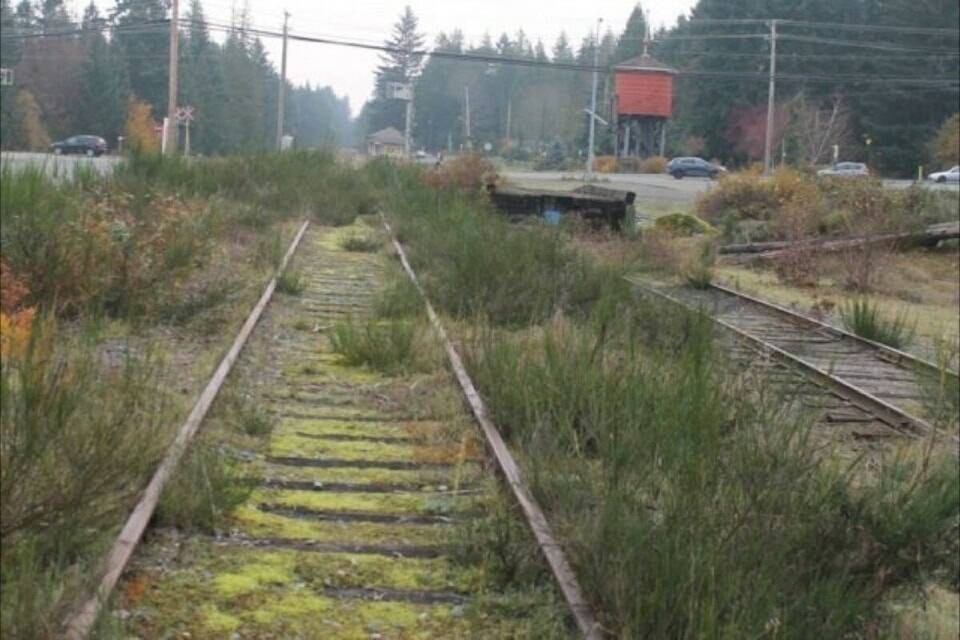A petition calling for the restoration of passenger and freight train services on Vancouver Island that garnered 7,610 signatures is expected to soon be presented to Parliament.
The petition asks that the government create a $1-billion fund using the various B.C. and federal government funding mechanisms for public transit, and guarantee funding to the Island Corridor Foundation, which owns the deteriorating 220-kilometre E&N rail line that stretches from Victoria to Courtenay, if approved for implementation.
RELATED STORY: DEADLINE LOOMS TO RESURRECT ISLAND’S RAIL CORRIDOR, BUT ICF OPTIMISTIC
The petition also asks the government to apply the funding to create a modern freight and passenger service on Vancouver Island, and to reconcile and resolve long-standing First Nations’ concerns with certain sections of the island corridor.
Shawnigan Lake’s Warren Skaalrud, who started the petition, said Cowichan-Malahat-Langford MP Alistair MacGregor has agreed to present the petition in Parliament, and then the government will have 45 days to answer each of the points it makes.
“We don’t intend for our railway system on Vancouver Island to go quietly away,” he said.
“We want to give some visibility as to what is going on here. Some people say that $1 billion is too much money to spend on rail on the Island, but there is currently $108-billion worth of rail projects on the go in Canada, so I don’t think $1 billion for our rail line is too much at all.”
Passenger train service on the rail line was stopped in 2011 due to track safety concerns, and freight service has also been discontinued on most parts of the Island as well.
RELATED STORY: CVRD VOTES TO SUPPORT RESTORATION OF ISLAND RAIL
The ICF currently estimates the cost of reviving rail on Vancouver Island would be approximately $431 million, and Skaalrud said that this can be accomplished if just the rail line itself had to be dealt with.
But he said some First Nations along the line may not want trains to go through their territory anymore, so some financial accommodations must be made in case land around these properties would have to be acquired for the railway.
After a long legal battle, Snaw-Naw-As First Nation near Nanaimo had railway land returned last year, and other First Nations are expected to make similar claims.
But Skaalrud said that starting with a reconciliatory approach with First Nations regarding the E&N rail line could bode well for the revitalization of the railway as returning the land to their control puts them in a better negotiating position, if they want to keep the rails on their reserves, as all levels of government and the industry try to find a way forward.
RELATED STORY: B.C. SUPREME COURT DISMISSES CLAIM AGAINST ICF
Skaalrud pointed out that there is currently a lot of activity happening towards reintroducing rail service, including the fact that the Ministry of Transportation and Infrastructure provided $18 million in grant funding last year to the 14 First Nations and five regional districts located along the rail corridor that make up the ICF to develop a shared vision for the rail line.
He said the ICF is also clearing vegetation and rockfalls all along the length of the rail line, and the foundation is in the process of hiring a corridor manager who would support the visioning process led by the province, in collaboration with First Nation communities and regional districts..
Skaalrud said a lot of people believe the rail line has deteriorated beyond the point of repair, but he said much of the major infrastructure, like bridges, are still in good shape.
As for rail ties that would have to replaced, he said there’s a mill in Port Alberni in need of work that can produce rail ties made of yellow cedar, which would require no creosote, that could be utilized.
Structural grades of yellow cedar are often used for bridges, home construction, railway ties and in the landscape as its natural rot resistance negates the need for chemically treated materials.
“I think revitalizing the railway would be a boon for the whole Island, in many ways,” he said.
